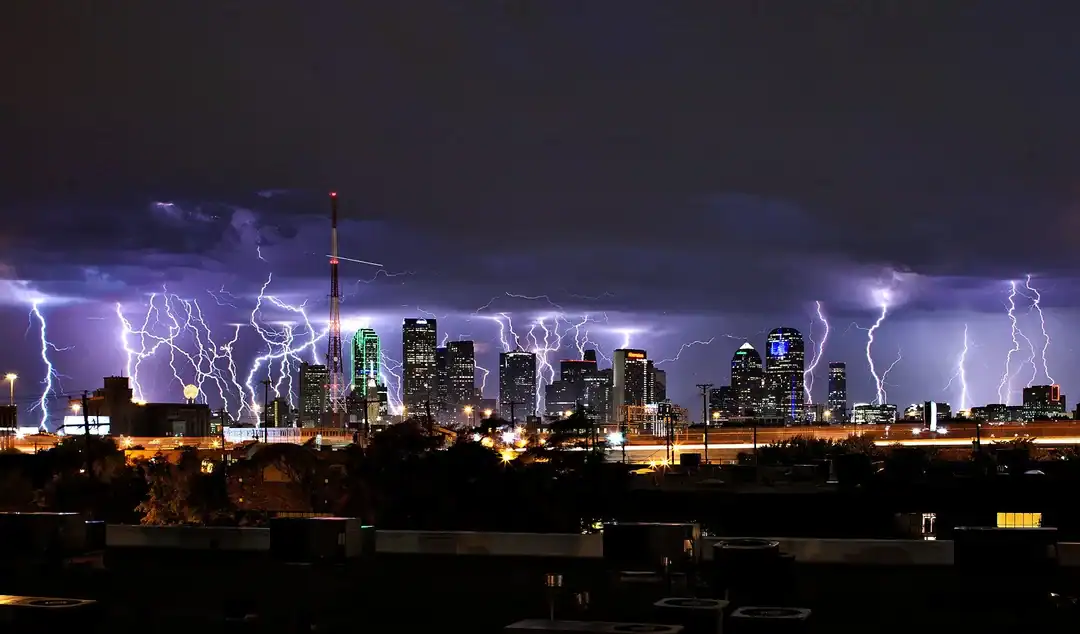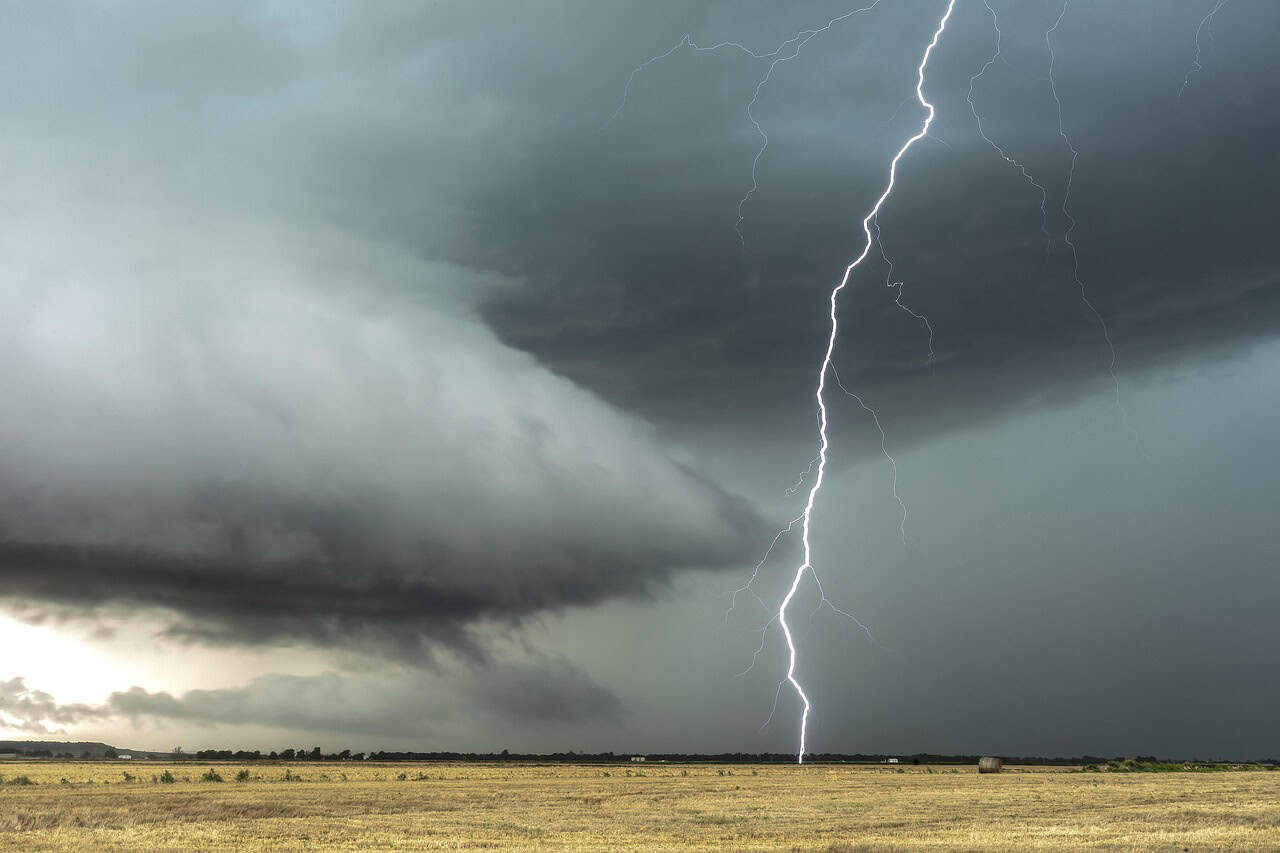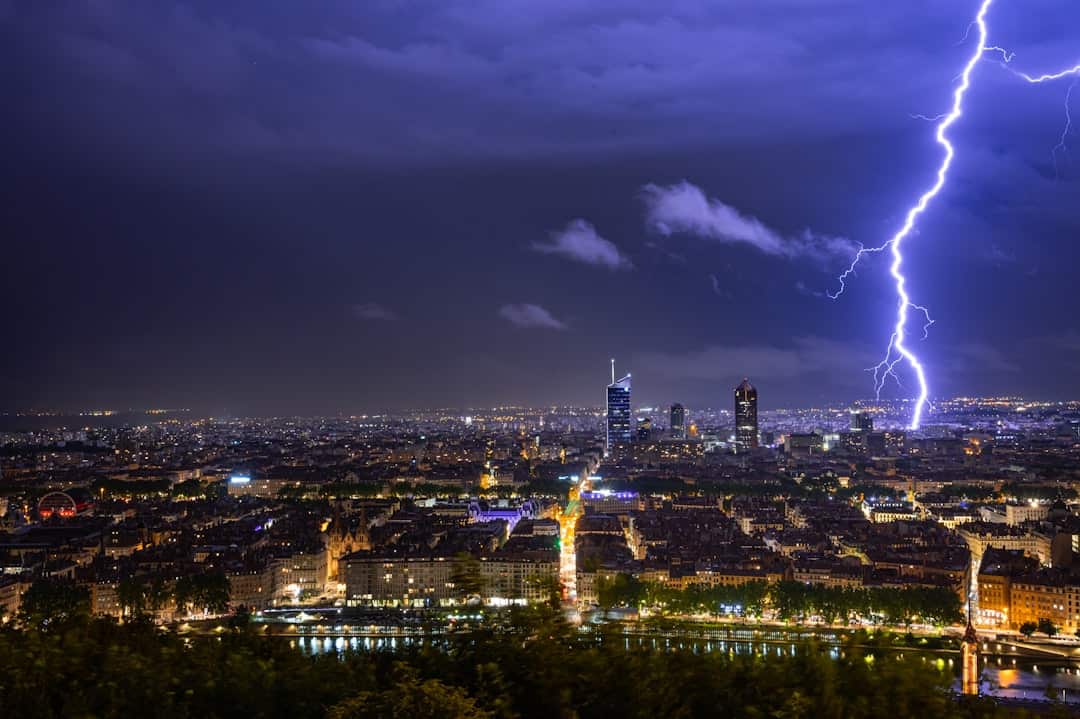Picture this: you’re driving through Texas, and suddenly lightning illuminates the sky. But this isn’t just any lightning bolt. This single flash traveled over 500 miles across multiple states, creating a spectacle that would forever change how we understand one of nature’s most powerful forces. What you’ve just witnessed is called a “megaflash,” and scientists have recently discovered one that breaks every record we thought possible.
On July 31, 2025, the World Meteorological Organization certified a new lightning record for the longest lightning bolt, at 515 miles, which occurred in 2017. But here’s the crazy part – nobody even noticed this monster bolt when it happened. It took nearly eight years and advanced satellite technology to finally spot what might be the most impressive lightning strike ever recorded.
When Lightning Becomes a Cross-Country Journey

The megaflash zipped across 515 miles from eastern Texas through Oklahoma, Arkansas, Kansas to near Kansas City, Missouri, in seven seconds, lasting 7.39 seconds. Think about that for a moment – this single bolt of electricity traveled the equivalent distance between Chicago and Nashville, or Paris to Venice in Europe.
It would take a car about 8 to 9 hours and a commercial plane at least 90 minutes to cover that distance. Yet this electrical phenomenon crossed five states faster than you could count to ten. It included over a hundred individual cloud-to-ground strikes and produced more than 116 cloud-to-ground lightning strikes from a lengthy and complex series of jagged paths woven through the clouds.
The Science Behind These Electrical Monsters

Most people think lightning is just a quick flash and done. While most lightning flashes measure 2 to 3 miles in length, some truly colossal bolts occasionally crackle above our heads, forking their way across hundreds of miles of sky. But megaflashes are different beasts entirely.
A megaflash occurs when a lightning bolt reaches 60 miles (or 100 kilometers, to be exact). Megaflashes are rare: Fewer than 1% of thunderstorms produce them. These aren’t your typical afternoon thunderstorm creations either. Megaflashes arise from storms that are long-lived (typically those brewing in the atmosphere for 14 hours or more) and cover areas roughly the size of New Jersey.
The Technology That Caught a Lightning Monster

Here’s where things get really interesting. The flash occurred on Oct. 22, 2017, but it was too long to be fully measured by ground-based sensors at the time. Now, a new study that used data from a geostationary satellite has finally documented the massive scope of the bolt.
The team reviewed data from the National Oceanic and Atmospheric Administration’s GOES-16 satellite, which is equipped with a lightning mapper that observes about one million bolts per day. Without these space-based eyes in the sky, this record-breaking megaflash would have remained invisible to science. Flashes at this extreme scale always existed, and are now becoming identifiable as our detection capabilities and data processing methods improve.
Why the Great Plains Are Lightning’s Favorite Playground

It’s no coincidence this megaflash happened over America’s heartland. The World Meteorological Organization has detailed this new world record for the longest lightning flash, which traveled 515 miles over North America’s Great Plains, an infamous hotspot that produces epic storm clusters capable of generating such epic electrical charges.
There are only two places on the entire planet where this kind of “megaflash” is likely to occur – over the Great Plains, which spans a vast area across central Canada and the United States. The flat terrain and unique atmospheric conditions create perfect conditions for these massive electrical displays. Flat, sheet-like clouds stretching from Texas to Kansas City formed a shallow layer that could easily conduct electricity — creating ideal conditions for lightning to travel horizontally for hundreds of miles.
The Domino Effect That Creates Lightning Giants

Scientists are still puzzling out exactly how these megaflashes form, but they have some fascinating theories. If a cloud system is highly charged across a large area, a series of discharges can propagate through it like a line of falling dominoes. “If dominoes are all set up without too big a gap, one triggers another in a large series of topples”.
The larger the parent cloud, the more opportunity there is for the discharge to continue propagating — “hence why megaflashes could, in principle, be as large as the parent cloud, should the charge structure be conducive”. It’s like nature’s own version of a chain reaction, but instead of dominoes falling, it’s electrical charges jumping from cloud to cloud across hundreds of miles.
Hidden Dangers Lurking in Clear Skies

Here’s something that might make you think twice about stepping outside after a storm passes. These megaflashes really point out one of the severe problems that is associated with thunderstorms. A lightning flash can start in a thunderstorm very far away, and travel, as we’ve just shown, 500 miles before it ends.
Most lightning strike injuries occur before and after the thunderstorm has peaked, not at the height of the storm. “That’s why you should wait at least a half an hour after a thunderstorm passes before you go out and resume normal activities”. Lightning kills 20 to 30 people each year in the U.S. and injures hundreds more. The storm that created this record-breaking bolt proves that danger can literally come from hundreds of miles away.
Climate Change and the Future of Megaflashes

Scientists suspect we might be seeing more of these monsters in the future. It’s possible that in a warming world, there might be an uptick in the types of storms that give rise to megaflashes. “And so, indirectly, that can make the conditions more likely, thereby increasing their frequency”.
With climate change potentially creating more intense and long-lasting storm systems, the conditions that create megaflashes could become more common. There are likely much bigger flashes out there than we’ve already seen. “Storms can get larger than [the ones we’ve measured from]”. That’s both fascinating and slightly terrifying to consider.
Now here’s something that will really make you appreciate the raw power of lightning. While we’re amazed by this 515-mile record-breaker, scientists believe there are even more massive bolts waiting to be discovered. The 2017 megaflash may be the longest ever verified, now beating out a bolt of 477 miles in April 2020, but scientists don’t expect it to hold that title for long. “Oh, we’ll find more”. The satellite-based lightning mappers that made this discovery possible have only been operation for about 10 years — a short window in climate science terms — and there’s a lot more data to analyze.
This record-breaking megaflash isn’t just a scientific curiosity – it’s a reminder that nature still has the power to surprise us in ways we never imagined. Every time we think we understand lightning, it shows us something new. What other electrical monsters are lurking in satellite data, waiting to be discovered?
- 15 Most Breathtaking Hiking Trails Around the World - August 8, 2025
- Here’s What US Weather Can Expect in an Upcoming LA Nina Winter 2024 - August 8, 2025
- What Is a Virgo’s Secret Weapon and Complete Facts About This Earthy Perfectionist - August 8, 2025

